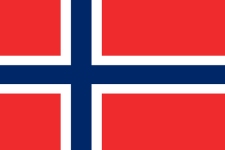
The Norwegian Red Cross (Norges Røde Kors) was founded in 1865; its purpose was voluntary medical aid in war and support to the Army’s Medical Services. However, it had little involvement in international medical aid in war until 1912. From then until 1940, the Norwegian Red Cross endowed ambulances staffed with trained nurses in four different military conflicts: The First Balkan War (1912-1913); The Finnish Civil War (27 January – 15 May 1918); the Second Italo-Ethiopian War (1935 – 1936); and The Winter War between Soviet Union and Finland (30 November 1939 – 13 March 1940).
The Norwegian government’s official involvement in the war was limited to two contributions: a ship suitable for the transport of military troops and a mobile army surgical hospital (MASH).1 There is unconfirmed information that 25 or 26 Norwegians served in military combat roles.2
Early in 1951, the Norwegian Red Cross had a welfare team in Korea, one of several from the League of Red Cross Societies “Ligue des Sociétés de la Croix-Rouge”. Welfare teams were a part of the United Nations Civil Assistance Command Korea (UNCACK), but the Norwegian team was commanded by Eighth U.S. Army in Korea (EUSAK). All welfare teams had to wear the US Army’s battle dress, with no Red Cross or national emblems. Although the Red Cross protested and demanded to operate as independent welfare teams and not under US military command, their request was denied. In addition to the US Army battledress, they carried a card with their rank, stating that this was “Valid only if captured by the enemy.”
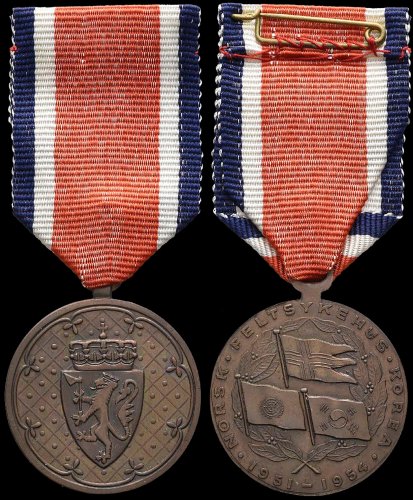
Instituted in 1955. In blackened bronze, and measuring 33 mm in diameter. The medal is a campaign medal instituted on April 29, 1955, awarded by the Norwegian government and conferred by the Defense Ministry for at least two months of service at the Norwegian Mobile Army Surgical Hospital during the Korean War.
The medal was awarded to 612 individuals serving in the NORMASH. The recipients received their medals from Crown Prince Olav 2 in October 1955 at the Akershus Fortress.

The Norwegian Government was a neutral nation, and on March 2, 1951 the Norwegian Parliament (Det Norske Stortinget) approved the plan for sending a civil Norwegian hospital to support the United Nation’s work. The hospital was dispatched in June 1951. The delay in sending the hospital was caused by the fact that in the early 1950s, the Norwegian armed forces were still under reconstruction after almost five years of occupation by the Nazis (June 10, 1940, to May 8, 1945). Officially, the hospital represented their nation in the non-military capacity of giving humanitarian aid and was staffed with civilian medical personnel serving alongside personnel with auxiliary functions and official status within the Norwegian Red Cross. This civil Red Cross hospital was operative from July 1951, but only attained the title “The Norwegian Mobile Army Surgical Hospital (NORMASH)” in October 1951. Norway had purchased a complete field hospital from the U.S. and the Norwegian Red Cross took responsibility for the administration of the hospital on behalf of Norway. It was the last mobile hospital to enter the Korean War. The nurses of the first contingent were not ordered to the combat zone in Korea. The matter was discussed with them, and they were given the choice between staying in Pusan or travelling to the combat zone. It was the nurses themselves who volunteered to serve close to the front lines. The day before the hospital’s official opening, their first patient was received, a young boy named Pak who was a burn victim. On July 19, 1951, the Norwegian (civil) Hospital was officially opened. They were the first non-American Mobile Army Surgical Hospital (MASH) on the battlefield. The civil Red Cross hospital was operative from July 1951, but only attained the title “The Norwegian Mobile Army Surgical Hospital (NORMASH)” in October 1951. During its first 40 days, NORMASH received 1048 patients , with 23 of them being Korean civilians. The Norwegian field hospital in Korea was, initially, a Red Cross hospital administered by the Ministry of Foreign Affairs, but on November 1, 1951, it was transformed into a military hospital under the control of the Norwegian Ministry of Defense. The fact that the hospital was a military component and not civil was not widely known in Norway. The King of Norway, Haakon VII, Commander in Chief of the Norwegian Armed Forces, addressed it as a Red Cross hospital in a telegram in 1952, and he was not the only Norwegian who mistook NORMASH for a civilian Red Cross hospital. For their first two months in Korea, the Norwegians were operating out of Uijeongbu 의정부 (approximately 12 miles (ca. 19 km) north of Seoul). NORMASH, under the Eighth U.S. Army in Korea (EUSAK), was known as “the Orchard” as it was originally placed in an apple orchard. They were moved twice more during the war, first to Dongducheon 동두천 (40 miles (ca. 64 km) north of Seoul) and on June 24, 1952, to Habongam-dong 하봉암동 just over 2.5 miles (ca. 4 km) farther north, where it could be better defended. In total, there were 80 surgeons, 111 nurses, 22 deacons, 5 dentists, 6 pharmacists, 98 officers/NCOs, and 294 privates who served. (Norway had not allowed men to train as nurses before 1948. It did, however, permit them to undergo a partial training and qualify as so-called “deacons”. Most deacons were not fully trained nurses and could not take over a nurse’s job. There were complaints of deacon students, who had not completed their education, and yet were better paid than fully educated nurses.) Norway never had a professional Army Nursing Corps. The hospital was changed from a Red Cross hospital to a regular army hospital, and the personnel changed their Red Cross uniforms for regular US army uniforms and ranks. This also included Norwegian army personnel for close protection of the hospital. The Red Cross nurses were given officer rank and insignia with the Red Cross emblem. When the Norwegian government became aware, in October 1951, that it had a unit in Korea that in fact operated as a military unit, it insisted that Norwegian nurses and surgeons must be temporarily commissioned officers in the Norwegian Army.
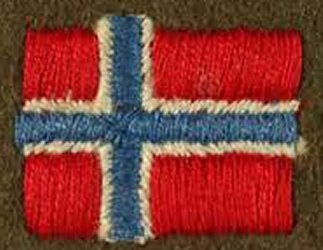
The staff members (crews) were exchanged every two months with 6-month assignments. In total, seven crews were sent to South Korea. In addition to the Norwegians, about 40-60 Korean civilians and some American personnel also worked there. Three Norwegians died during the deployment to Korea.3 The hospital treated about 90,000 casualties as well as 80,000 dental patients. Medical records indicate that NORMASH averaged about eight surgeries per day, with variations ranging from 1 to 64 surgeries per day for a total of approx. 9,600 operations.4 The survival rate of wounded soldiers was 98.8% with 80% of them being able to return to active duty. Hospital staff quickly realized that their status in the war-zone was primarily that of a military field hospital, yet they insisted on providing essential medical care to the local civilian population as well as trauma-care to UN soldiers and prisoners of war. The Norwegian nurses taught practical nursing in rural areas near the hospital, while the medical staff, including dentists, worked at hospitals in Seoul and at a regional leper village. By the time the cease-fire talks began, the NORMASH offered services to civilians. For wounded children. It provided food, shelter, and a place to sleep. They also rendered aid likewise to 172 North Korean and Chinese prisoners of war (POWs). Some nurses, had worked in China as missionaries before the communist revolution. Their knowledge of the Chinese language was a great help in dealing with Chinese POWs. Some POWs were afraid of being poisoned by the Norwegians. Chinese propaganda had told them that they would be tortured and executed, or killed by stealth. Those Norwegians who could speak Chinese were of great help in translating and providing information about what was going on. Without such help, commencing treatment could be a problem. NORMASH and their work with orphaned children, led to the creation of an association called the “Norwegian-Korean Friendship Association” (Norsk-Koreansk Vennskapsforening), which funneled Norwegian aid into the post-war Korean community as well as helping in the adoption of orphaned Korean children.5
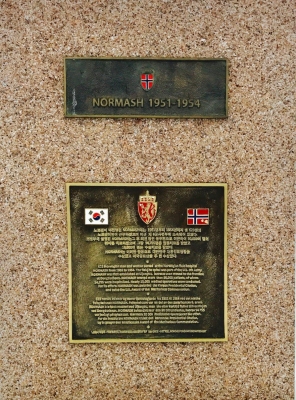
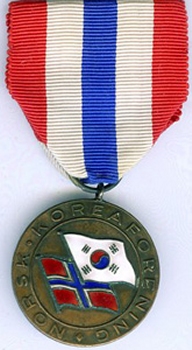
Norsk-Koreansk Forening Medalje
The reverse is bordered by laurel branches, but is otherwise blank.
On July 27, 1953, the armistice agreement was signed, but until the situation became clearer, NORMASH continued its operations as did other UN-operations. In the fall of 1953, NORMASH was the only hospital for four divisions in the 1st Army Corps. With the end of hostilities, the blood supply ceased for non-military cases. Staff at NORMASH established a blood bank for Koreans. Some of the first donors were the Korean staff at NORMASH, and the first transfusions were done in March 1954. After the armistice was signed, all military units were kept in a state of preparedness for further possible hostility. As the year passed, it became clear that the armistice would endure. With the withdrawal of the UN troops, NORMASH officially closed its doors on November 10, 1954. In 1997, the last MASH unit in South Korea was deactivated.6
The Norwegians saw their hospital, not as a military structure, but as a “sanctuary fulfilling a humanitarian mission”. Their personal agendas chimed well with the motto of the International Red Cross: “Inter Armas Caritas” (In war, charity).
The Korea-Norway Friendship Association erected a monument to commemorate NORMASH in Dongduchon on March 30, 1972. Dongduchon was chosen because the field hospital was located there for two of the three years that it was in operation. The monument was moved in 2000, and is now located outside the new Freedom Protection Peace Museum. This Museum opened in May 2002 and displays items from all the nations, that participated under the UN flag. For many years, Korea has celebrated a “Korean War Hero of the Month” and Normash was selected in July 2021. There is a Norwegian Memorial located at the Korean United Nations Memorial Park 재한유엔기념공원 (在韓유엔記念公園) in Pusan. In July 2021, the Norwegian field hospital Normash was received the honor. In Norway, the Korean War Memorial honoring the Norwegians who served in NORMASH is located in the city of Oslo, right outside the military museum that exhibits artifacts from the Korean War.
NORMASH received two United States Meritorious Unit Commendations (for the period July 1951 to July 1952 and again for the period July 1952 to July 1953) and two Republic of Korea Presidential Unit Citations (October 6, 1952, November 23, 1953).
If you are interested in the names of the Norwegians who served in NORMASH during the Korean War, get the book: “NORMASH Korea i våre hjerter”, published by Norske Koreaveteraners Forening (Norwegian Korean Veterans Association). The book is written in Norwegian, but names are names and would be the same in English.
Footnotes:
- The general idea was that there should be one MASH unit per division. Mash units usually picked up and moved to stay close to the front lines of combat and to the division to which they were attached. Moving a MASH came to be known as “Bugging Out” or “Bug Outs”. Specifically, standards for a MASH required that it could be disassembled, loaded onto vehicles, and ready to depart on six-hour’s notice. After arrival at its new destination, it was to be operational within four hours.
- Not to be confused with the Guard detail, responsible for camp security and perimeter defense. It consisted of one infantry squad of 10 Norwegians commanded by a First Sergeant, plus a Korean MP platoon of 40 men.
- Reidar Georg Tveit, a second-class engineer on the merchant ship, Velotion, which carried medical staff and equipment. He died of asphyxiation, due to disease, on August 23, 1951. He is the only Norwegian buried at the Korean United Nations Memorial Park 재한유엔기념공원 (在韓유엔記念公園) in Pusan. Driver Arne Christiansen was shot and killed in 1952. Clinical pathologist Brit Reisæther died in a car accident in 1954.
- The 64 surgeries in 24 hours was on July 1st, 1953.
- In 1978, the Norwegian Korea Friendship Association wanted to expand its adoption activities to include other countries besides Korea. Adoption and aid work were separated into a separate department within the association under the name Verdens Barn (Children of the World).
- The last MASH unit left in the world, in Albania, was to be deactivated in February 2006.
